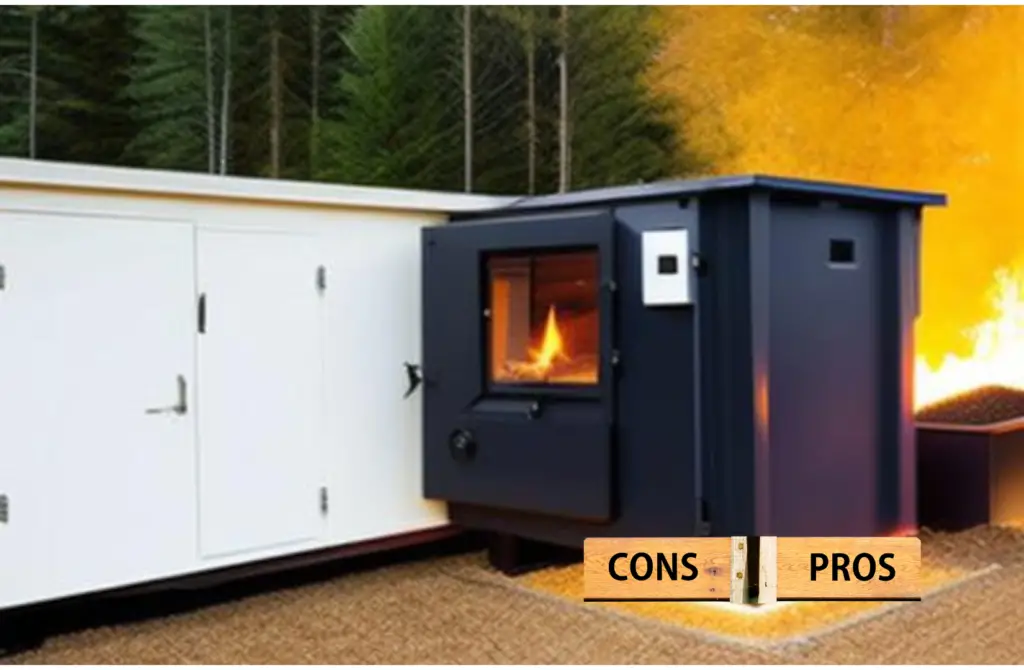Biomasses are not only sustainable, and cost-effective. They’re also very easy to install and remove. Installing a biomass boiler is an amazing way to bring down your carbon footprint and energy costs while also using a sustainable and renewable energy source.
The installation process is pretty complex. It involves quite a number of steps. Some of which include selecting a suitable model, securing necessary permits. Then, preparing the site and finally installing the boiler. You may need to employ the services of a professional for optimal results.
Whether you’re a homeowner looking to reduce your carbon footprint or a business owner looking to lower your energy costs, this article will provide the information you need to install or remove a boiler.

Key Considerations when Installing a Boiler
Installing a biomass boiler is becoming a popular choice for heating and hot water in homes and businesses. However, you need to make several considerations before installing a Biomass boiler.
Site and Space Requirements
Biomass boilers come in different sizes and designs. It is crucial to ensure that you have enough space for the boiler and any associated equipment. The location of the boiler should also be considered in terms of access to maintenance and fuel delivery. This is because, you want to ensure a smooth operation for the boiler while in operation.
Fuel Type and Availability
Biomass boilers can run on different fuel types, such as wood chips, pellets, or logs. It is essential to consider which fuel type is most readily available and cost-effective in your area. For people who stay in rural areas or off the grid settlements, biomass boilers would be the best heating option when you consider fuel availability.
The fuel for this system can be easily sourced locally. Sometimes at no cost, especially if you have waste wood lying around. For people who live in urban areas, kindly ensure you have a steady supply of biomass fuels before installing one in your home.

Heat Demand
Biomass boilers come in different sizes and output levels, so choosing a model that matches your heat demand is essential. An undersized boiler will need help to meet your heating needs, while an oversized boiler will be inefficient and costly.
Compatibility with Existing Heating System
If you already have a heating system installed in your home, it is vital to ensure that the biomass boiler is compatible with your existing heating system. This is to ensure that necessary modifications can be made to accommodate the new boiler. Also, if the modifications made would affect the overall efficiency of the system, then its not worth it.
Permits and Regulations
Installing a biomass boiler may require permits and inspections to ensure compliance with local building codes and regulations. Researching and securing the necessary licenses is essential before proceeding with the installation.
Maintenance and Upkeep
Biomass boilers require regular maintenance and upkeep to ensure optimal performance and longevity. Considering the cost and availability of maintenance services in your area is essential.
You can install a fully automated biomass boiler to help reduce the need for human presence (maintenance and upkeep). This would help with the removal of ashes from the system and the feeding of fuel into the boiler.
Cost and Financing
This is the most crucial part of installing a Biomass Boiler. This is because, installing a biomass boiler can be a significant investment, so it’s essential to consider the cost and financing options available. It’s worth researching government grants, rebates, or loans that can help reduce installation costs.

Do You need Planning Permission to Install a Boiler?
You may or may not need permission to install your boiler depending on your location. You need planning permission to install a boiler in the United Kingdom. To ensure the safety and security of the property and its occupants, you must adhere to this important requirement.
Failing to obtain the necessary planning permission could result in legal action being taken against the property owner.
The process to obtain a planning permission for a boiler installation is relatively straightforward. Firstly, the property owner must submit an application to their local planning authority, which will then assess the proposed installation and decide whether it is permissible. This process usually takes around eight weeks but can take longer, depending on the complexity of the application.
We strongly encourage all property owners in the United Kingdom to ensure they obtain the necessary planning permission before installing a boiler. Doing so will help to protect their property and its occupants, as well as ensure they are compliant with the law. It is also a sign of responsible ownership and will help to maintain the safety and security of the property.
Key Considerations when Removing a Biomass Boiler
Installing a biomass boiler is an easy process compared to removing it. Removing an old boiler can be a complex process that requires careful planning and consideration. There are factors to consider when removing a boiler, including safety, cost, and environmental impact.
Safety
There are so many things involved in making a boiler work. So, removing a boiler involves working with gas, electricity, and water, which can be dangerous if not handled properly. It is important to ensure that the removal is performed by a qualified professional who is experienced and trained in handling these systems.
Cost
The cost of removing a boiler can vary. It is dependent on the size and condition of the boiler, as well as the complexity of the installation. It is important to consider removal cost and disposal in relation to the potential savings from a new, more efficient system.
Environmental Impact
The removal and disposal of an old boiler can impact the environment. Considering the potential environmental impact of the removal process. Finding out if the boiler contains toxic materials, such as asbestos, and ensuring the safe disposal of these materials is important.

Compatibility with the New System
You should remove your boiler in a way that allows for the efficient installation of the new system with minimal disruption. Also, ensure that the new boiler is compatible with the existing heating system and perform any necessary modifications before removing the old boiler.
Legal Requirements
It is important to ensure that the removal of the old boiler and disposal of its components comply with any legal requirements, including environmental regulations and building codes.
Timing
You need to consider the timing of the removal of the old boiler. especially if it is the only heat source for the building. This is to ensure that the building remains warm and comfortable during the removal process.
You should consult a professional to help you evaluate your options and make the best decision for your situation.
Conclusion
Installing or removing a Biomass system from your home is a fairly straightforward process. Before you install your Biomass system in your home, you may need to get a permit from the Building regulations depending on your location.
Also, you need to be aware of the cost of the unit and the cost of installing one in your area. You may need to consult the services of a professional to help the sizing and the installation of the system for optimal functionality during its service life.
If you decide to remove your unit, you may also need to consult the services of a professional to remove the unit. This is to ensure your safety and that your unit is not damaged in the process.
